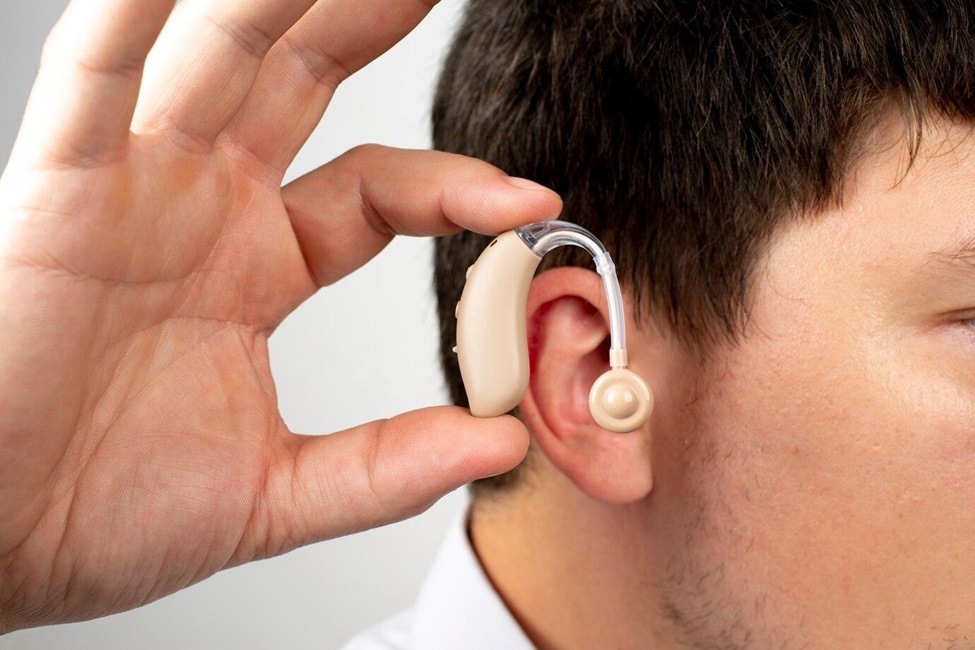
Explore the transformative potential of hearing aids, revolutionizing sound perception. With advanced features, they restore the joy of listening, effortlessly enhancing conversations, music enjoyment, and reconnecting with nature’s sounds.
Understanding Hearing Loss
Hearing loss, affecting millions globally, stems from age, genetics, loud noises, and medical conditions. It impairs our ability to perceive sounds fully, hindering conversation participation and auditory enjoyment.
This loss profoundly affects our well-being, causing social isolation, cognitive decline, and reduced life quality. Recognizing its causes and effects is pivotal for seeking suitable interventions.
The Importance Of Addressing Hearing Loss
Addressing hearing loss is vital to improving our quality of life. By seeking help and using hearing aids, we can regain our ability to communicate effectively, participate in social activities, and enjoy the simple pleasures of everyday life.
Ignoring hearing loss can have serious consequences. It can strain relationships, lead to misunderstandings, and even put our safety at risk. By taking action and seeking professional guidance, we can prevent these negative impacts and take control of our auditory health.
How Hearing Aids Work
Hearing aids amplify sound to assist those with hearing loss. They consist of a microphone, amplifier, and speaker. The microphone picks up sounds, converting them to electrical signals, which the amplifier strengthens. The speaker then converts signals back to sound for the ear.
Today’s hearing aids employ digital tech for personalized listening, adapting amplification to individual preferences and needs. This enhances speech recognition, minimizes background noise, and eliminates feedback, offering a more natural auditory experience.
Types Of Hearing Aids
There are various types of hearing aids available, each with unique features and benefits:
- Behind-the-Ear (BTE) Hearing Aids: These sit behind the ear and are connected to a custom earpiece that fits inside the ear canal. They’re suitable for mild to severe hearing loss and offer many features.
- In-the-ear (ITE) Hearing Aids are custom-made to fit inside the outer ear. They’re discreet and comfortable, suitable for mild to severe hearing loss.
- In-the-canal (ITC) and Completely in-the-canal (CIC) Hearing Aids are the most discreet options, partially or entirely inside the ear canal. They’re virtually invisible and suitable for mild to moderate hearing loss.
Choosing The Right Hearing Aid For You
Finding the right hearing aid is vital to enhancing your listening experience. Consult a hearing specialist at Apex Audiology who can evaluate your needs and recommend suitable options.
Consider the severity of your hearing loss and your lifestyle, budget, and personal preferences when choosing a hearing aid. Your specialist will guide you through the selection process and help you find the perfect fit.
The Benefits Of Wearing Hearing Aids
Wearing hearing aids offers a multitude of benefits that extend beyond improved hearing. Here are some of the key advantages:
- Enhanced Communication: Hearing aids enable better speech understanding, making conversations easier and enabling effective communication.
- Improved Quality of Life: By addressing hearing loss, you can regain your ability to enjoy social activities, music, and the sounds of nature, leading to a more fulfilling and enjoyable life.
- Increased Safety: Hearing aids allow you to be more aware of your surroundings, making it easier to detect warning signals and stay safe in various environments.
- Cognitive Benefits: By providing auditory stimulation, hearing aids help keep your brain active and potentially reduce cognitive decline risk
- Emotional Well-being: Hearing aids can boost your self-confidence, reduce feelings of isolation, and improve your overall emotional well-being.
Tips For Adjusting To Wearing Hearing Aids
Adjusting to hearing aids can take time and patience. Here are some tips to help ease the transition:
- Start Slow: Wear your hearing aids in quiet environments for short periods, gradually increasing the wear time.
- Practice Listening: Engage in activities like watching TV or having conversations to help your brain adjust to new sounds.
- Seek Support: Join support groups or talk to a counselor to connect with others who understand your experience.
- Maintain Your Aids: Follow the manufacturer’s instructions for cleaning and caring for your hearing aids to ensure they function well.
- Stay Positive: Be patient with yourself and celebrate small victories along the way.
Maintaining And Caring For Your Hearing Aids
To maintain your hearing aids and ensure optimal performance, follow these tips:
- Clean them regularly using a soft, dry cloth to remove moisture, earwax, or debris. Avoid using water or cleaning solutions unless advised by the manufacturer.
- Store them properly in a clean, dry, and protective case when not in use. Avoid exposing them to extreme temperatures or humidity.
- Replace batteries promptly when they run out of power. Keep spare batteries on hand and follow the manufacturer’s instructions for replacement.
- Schedule regular check-ups and maintenance appointments with your hearing care professional to ensure your hearing aids function correctly and make any necessary adjustments.
- Be aware of feedback or whistling sounds, and consult your hearing care professional if you experience them. They can adjust your hearing aids to eliminate the issue.
Common Misconceptions About Hearing Aids
Let’s dispel some common myths about hearing aids:
- Only the elderly use hearing aids: Hearing loss affects people of all ages, and hearing aids can benefit anyone experiencing it.
- Hearing aids restore perfect hearing, but while they significantly improve hearing, they can’t fully restore it to its original state.
- Hearing aids are bulky and unattractive. Modern designs are sleek and discreet and come in various styles and colors.
- Hearing aids are expensive: While they can be an investment, affordable options, and financing plans make them accessible.
- Hearing aids are uncomfortable: Today’s models are designed for maximum comfort, with custom fits and adjustable features.
Conclusion: Embracing A World Of Sound With Hearing Aids
In conclusion, hearing aids can transform your listening experience from mere sound to absolute clarity. By addressing hearing loss and embracing the benefits of wearing hearing aids, you can regain your ability to communicate effectively, enjoy social activities, and reconnect with the sound world.




